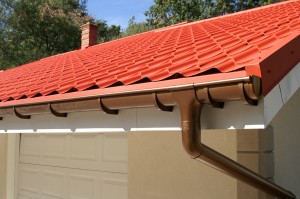Waterproofing A New Basement
 There are a variety of techniques, materials, and repairs which a homeowner or a contractor can use to keep water out of a basement or crawlspace, but the best ways to keep a basement waterproof come into play when the house is first constructed. After all, some things are just easier to do when all you’ve got are a few concrete walls in a big empty pit.
There are a variety of techniques, materials, and repairs which a homeowner or a contractor can use to keep water out of a basement or crawlspace, but the best ways to keep a basement waterproof come into play when the house is first constructed. After all, some things are just easier to do when all you’ve got are a few concrete walls in a big empty pit.
Sand And Gravel Backfill
The pits which work crews dig out to make room for a basement are much larger than the basements themselves, so they need to be refilled first to form a base and then to cover the sides. But instead of filling this space with the dirt and clay which usually sits under most houses, construction crews will fill it in with gravel and sand. These materials do just fine at filling in the space, but because they’re made up of larger particles, they let water filter through and drain away, preventing it from building up and putting pressure on the basement walls.
Interior And Exterior Drainage
Also known as French drains, these systems consist of PVC pipes covered in holes and filters which keep out dirt and debris and which either connect to the municipal storm drain system or else simply move water away from the house’s foundation. If there’s a relatively high water table or else a flood risk in the area the drain system will be connected to a sump pump to actively move water away from the foundation, but the system can work fine even without one.
Roof And Gutter Design
As surprising as it may sound, the shape and design of your roof has a strong impact on the durability of your basement. The gutters along the eaves aren’t there just for show, they’re there to keep rain from dripping down along the foundation and either sneaking into your basement or eroding the concrete directly.
The Lay Of The Land
Much like the slope of the roof and the quality of the gutters, the slope of the ground itself plays a role in keeping water away from your foundation. Although it doesn’t have to be very steep, a slope that moves away from the sides of the house will keep rainwater from pooling against it. The sand and gravel backfill also helps with this sloping gradient because it doesn’t settle and compact, changing the slope’s direction.
Waterproof Membrane
In addition to these standard waterproofing measures, a construction company can add some real additional value to a new home by applying a rubberized waterproof membrane to the outside of the concrete walls. A durable, waterproof substance will keep water out even when cracks slowly but surely start to form in the walls and foundation slab, which means you’ll have plenty of time to fix them without having to worry about a leak aggravating the problem or giving basement pests the opportunity to get a foothold in your home.
In addition to foundation repairs and waterproofing services for existing homes, AA Action Waterproofing also offers preconstruction waterproofing consultations for homebuyers who want to make sure their new house will last a lifetime and beyond. If you’ll be living in Maryland, DC, northern Virginia, Delaware, New Jersey, or Pennsylvania, contact us today for a free initial estimate.
